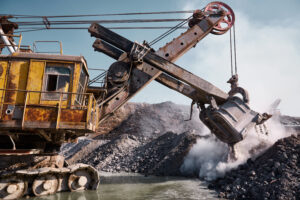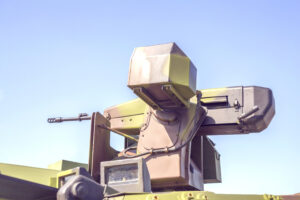Liontown Resources (ASX:LTR): Have collapsed lithium prices sent the one-time market darling from spectacular riches to rags?
![]() Nick Sundich, April 28, 2025
Nick Sundich, April 28, 2025
We’ve all heard the saying ‘rags to riches’ and when Liontown Resources (ASX:LTR) found Kathleen Valley, it was the perfect illustration of what it means. Liontown was just another small cap explorer, hoping to stumble across a major deposit and turning it into a mine – but of course, with little hope.
Unfortunately, you could argue 2023-24 was might be the opposite – riches to rags. It shed roughly two thirds of its market value from over $6bn to $2bn, had a takeover deal fall through, not to mention a major financing deal that would’ve helped it bring Kathleen Valley into production also falling through. The latter deal was signed on the dotted line, but lenders walked away. Why? Falling lithium prices. But does this mean the long-term story is no longer in tact?
Well, not necessarily, because the company has just entered production as it had promised. However, it will be operating at a loss for the foreseeable future and the company is banking on a big lithium price recovery.
Who is Liontown Resources (ASX:LTR)?
Liontown Resources is an ASX resources company responsible for the Kathleen Valley lithium project. The project, which Liontown made the Final Investment Decision on in 2022, is one of the most significant new, long-life lithium projects being constructed anywhere in the world.
Liontown Resources was founded in 2011 and for several years was just another small cap explorer. Initially focused on gold exploration in Western Australia, the company shifted its focus to lithium exploration by 2014, and picked up Kathleen Valley project in 2016. The rest is history.
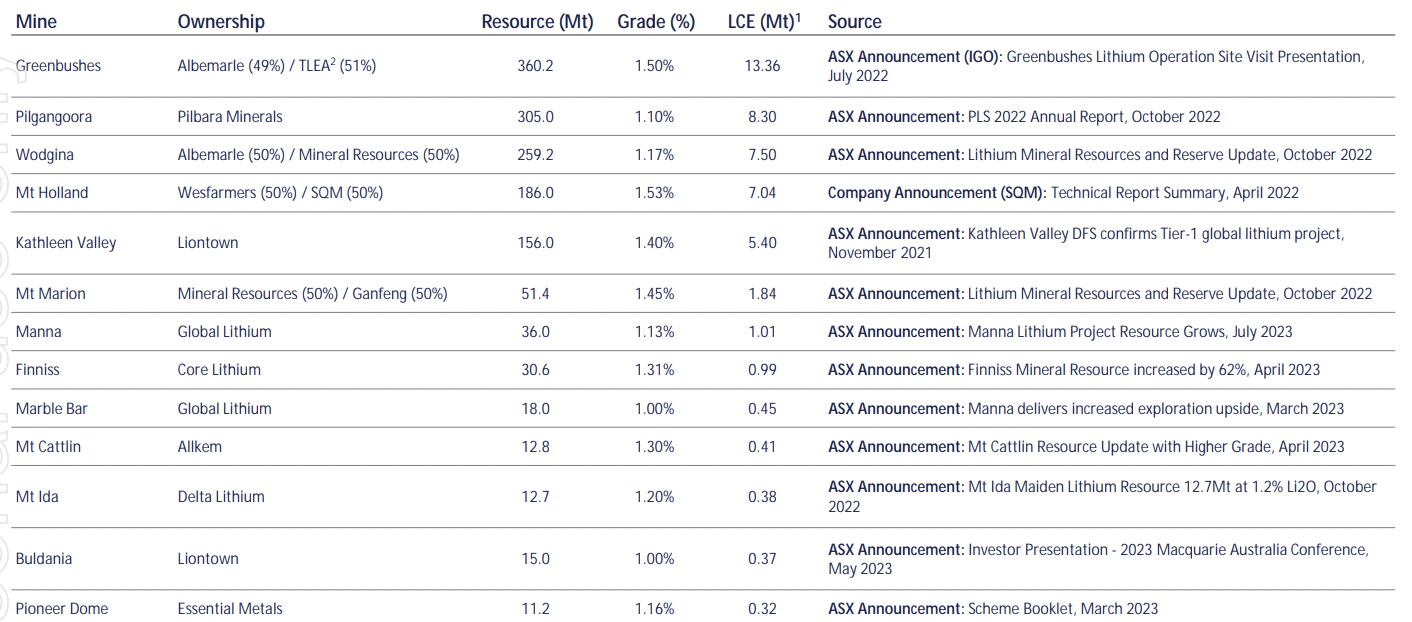
Source: 2023 Diggers & Dealers presentation
Great project metrics
Kathleen Valley has a current Mineral Resource Estimate of 156Mt at 1.4% lithium and could produce over 500ktpa over a 23-year life of mine. Over 80% of this is Measured or Indicated. The project’s economics, outlined in the 2021 DFS include an NPV of A$4.2bn and a 57% IRR after tax. There is also a tantalum by product that will generate further revenues, and a strong ESG focus with significant renewable energy use at the project – >60% at the project start up.
Even with the fall from all time highs, the company’s shares have never looked back as it unveiled the deposit, defined the resource and commenced construction on the project, aimed for first production in the second half of 2024 (a goal that was reached on schedule), as well as securing the initial offtake agreements.
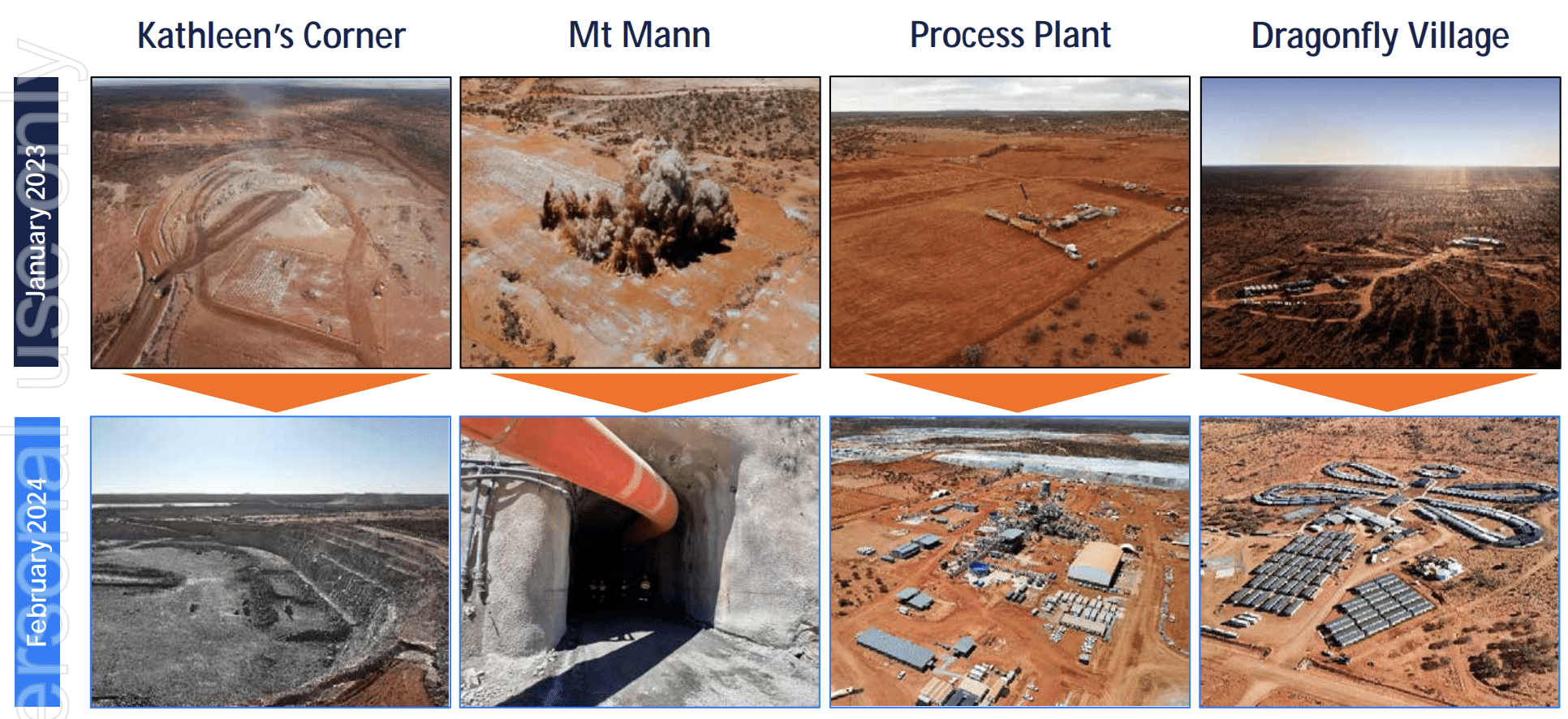
Source: Company
From rags to riches, to rags again?
Obviously, it is all well and good to have a big lithium deposit, but pointless if it cannot be extracted economically and if there are no customers. Liontown has customers including Tesla, Ford and LG and total offtake commitments of up to 450,000 dmt (dry metric tonnes) per annum. The 2021 DFS had low operating costs of US$314/dmt. And it was ideally located in Western Australia, a jurisdiction with practically zero sovereign risk. All the boxes seemed ticked.
Unfortunately, it has been a poor run for lithium prices. The growth in electric vehicles has slowed throughout the last 18 months and demand for lithium has followed suit. In China for instance, EV sales grew 84% in 2022 but only 25% in 2023. In January 2024, spodumene concentrate was US$955, down 90% from 12 months earlier. Ouch.
All companies developing mines would make contingencies for scenarios where prices fall 20-30% from their base case, but typically not where it falls below their cost curves. And for many lithium (and other battery metal) miners and developers, this is just what has happened. Morgan Stanley estimated that 6% of global lithium production was removed in the first 6 months of 2024.
Another victim of the lithium crash
Liontown is not the only battery metals stock to be impacted by falling prices. Core Lithium halted production at its mine, Albemarle cancelled the proposal to build a 4th processing facility at its own project and Panoramic Resources went into administration, sending the shutters slamming shut on its flagship nickel mine. Liontown has been hit.
As a result of these events, a $6.6bn takeover bid from Albemarle fell through and rumours Gina Rinehart would make a move of her own came to nothing. The rumours were legitimate because she was buying shares in the company but stopped right at 19.9%.
And barely 3 months after signing a commitment letter and credit approved term sheet for a $760m debt financing package, the company was sent back to the drawing board and eventually negotiated a smaller A$550m facility. This syndicate includes CBA, NAB, Societie Generale, Export Finance Australia and the Clean Energy Finance Corporation. HSBC, Westpac and ANZ were originally part of the syndicate but withdrew.
Liontown has also been impacted by rising inflation. A shortage of contractors and input shortages led to the capital costs blowing out. Kathleen Valley had been estimated to cost $240.5m in late 2019. This rose to $325m in 2020, $473m in November 2021 and then $545m in mid-2022. The final ‘upgrade’ was to $895m in January 2023. At the time, investors didn’t care that much because they believed it would pay for itself quickly given lithium prices at the time. Not so much now. CEO Tony Ottaviano openly called for government support in the form of royalty relief.
Production is underway
Notwithstanding all of the above, Liontown began production in mid-2024. In the first 6 months, it produced 116,854dmt and sold 92,172dmt, reaping $100m revenue. It managed an average price of US$811/dmt and had an average operating cost of US$652/t. Ultimately, the company made a $15m loss in that period as it only booked revenue on production sold, and it lost $43m from financing activities including interest payments and forex losses, with a further $19.4m shed on corporate expenses.
Nonetheless, the company claimed $66m EBITDA by excluding depreciation, forex movements and adding back fair value movements on derivative liabilities. Its debt stands at just under $700m which represents a gearing ratio of 47%. Its debtors are Ford and LG. In Q3 of FY25, it produced 95,709dmt (37,171 of which was in the March quarter).
Liontown has big expectations
LTR has told investors that it anticipates a 2.8Mtpa production rate from the end of FY27 with a focus on high margin tonnes and expected reduction in development and other fixed costs. For 2H25, it has issued guidance of A$775-855 per dmt in unit operating costs and AISC of $1,170-1,290.
It expects 2.3Mt lithium at 1.2% and to produce 260-295kdmt of concentrate. Keep in mind this is just for the second half and whilst the full year results may look different, the company has said the second half is a better representation of a ‘steady state’.
But what about the lithium price?
Liontown cannot say when but is confident it will, noting that EV sales are growing strongly. The market has been reinvigorated by the emergence of BYD and its fast-charging, lower-cost car models. BYD’s sales in the March quarter were up 59% year on year, and EV battery giant CATL’s Q1 profit rose 33%.
The latter forecasts 83% year on year growth in demand for EVs. By kt of LCE, it estimates 1,050kt in 2025, up from 779 in 2024, and for 2,443kt by 2030. Of course Liontown’s presentation noted,’ Current low pricing levels continue to disincentivise exploration, brownfields expansion and new products’. Nonetheless LTR anticipates the supply overhang will reduce with strong demand as non-EV markets for lithium (like drones, robotics and AI data centres) emerge.
Industry experts are optimistic about demand, but less so about prices rebounding (at least in the immediate term. Wood Mackenzie estimated that lithium demand grew by 25% in 2024, and that it’ll grow by 20% in 2025 and then a 10% CAGR up to 2035 which would see 3,545kt LCE demand, up from 1,237 in 2025.
Goldman Sachs is a strong bull it expects US$949 per tonne in 2026, US$1,155 per tonne in 2027 and US$1,264 per tonne in 2028 – a 55.1% increase in 4 years.
In our view, that’s evidently a better scenario than prices remaining stagnant for 5 years, but not the most ideal scenario because it suggests slow growth for 6-12 months.
Our view
We’ve done our own modelling on Liontown, the assumptions are below. You’ll notice the lithium price was US$1,392/t, a heavy discount to the current price and an NPV of A$4.2bn.
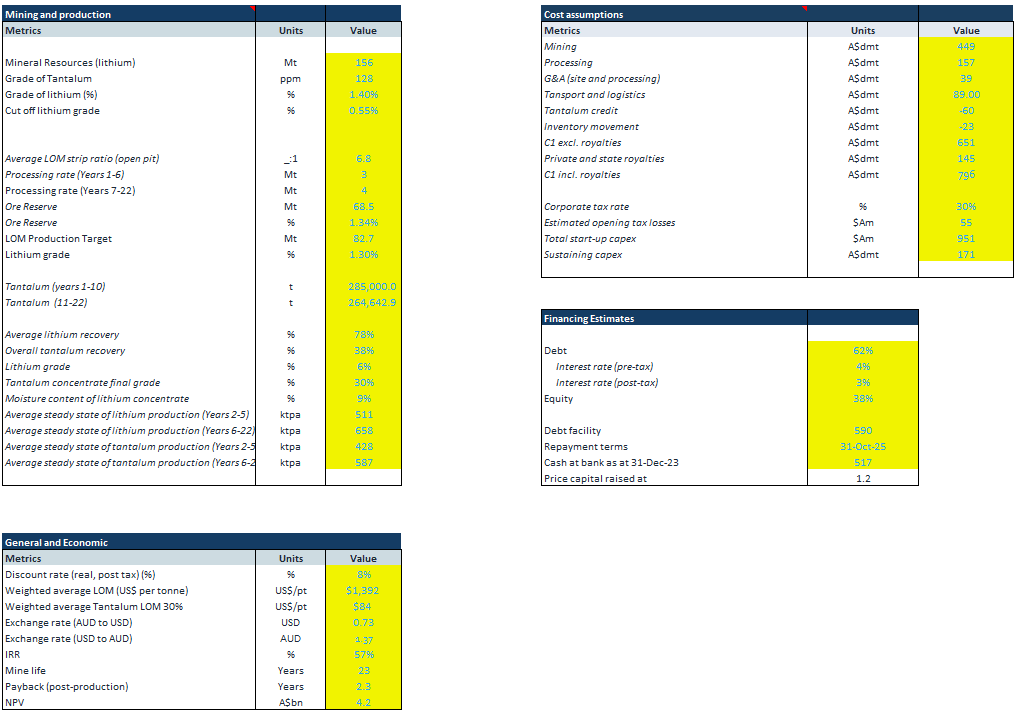
Source: Stocks Down Under derived from 2021 DFS and 2023 cost updates
The cost increases take it down to $3.2bn, using an 8% discount rate. Considering the company is just below $1.4bn in market capitalisation right now, the project looks compelling, but not as much as what Ablemarle was willing to pay. Evidently, Ablemarle assumed prices would remain high. Adjusting the price to US$1,800 derives the $6.5bn+ bid that it had made. But cut it to US$950/t and our NPV becomes negative. Take out the discount rate and it is just $332m – certainly not worth investing $500m into.
Anyone investing into Liontown is obviously assuming lithium prices will rebound – except the debt financiers who obviously assume the company will be able to raise further equity in the next 18 months or so.
Should I buy Liontown shares?
Not until there’s evidence that prices are turning around. Not even the company entering production has proven to be a catalyst with prices remain as depressed as they are now. Because investors can forget about a multi-decade operation if there’s no recovery.
What are the Best ASX Stocks to invest in right now?
Check our buy/sell tips
Blog Categories
Get Our Top 5 ASX Stocks for FY26
Recent Posts
FortifAI (ASX:FAI) Acquires NOL8 in a Bold Play to Power the Data Future
FortifAI’s NOL8 Acquisition Signals Next-Level Ambitions in Data Processing FortifAI Limited (ASX:FAI) surged 25% today after announcing a strategic pivot…
Fortescue (ASX:FMG) Digs Deeper Into Copper with Alta Acquisition
Fortescue’s C$139M Alta Deal Explained Fortescue (ASX:FMG) is moving to acquire the remaining 64 percent of Alta Copper Corp, a…
Electric Optic Systems (ASX:EOS) Lands Major $120M Asia Military Contract, Is It Time to Buy?
EOS Fires Up Second High-Energy Laser Sale Electric Optic Systems (ASX:EOS) is moving toward a potential partnership with a South…


